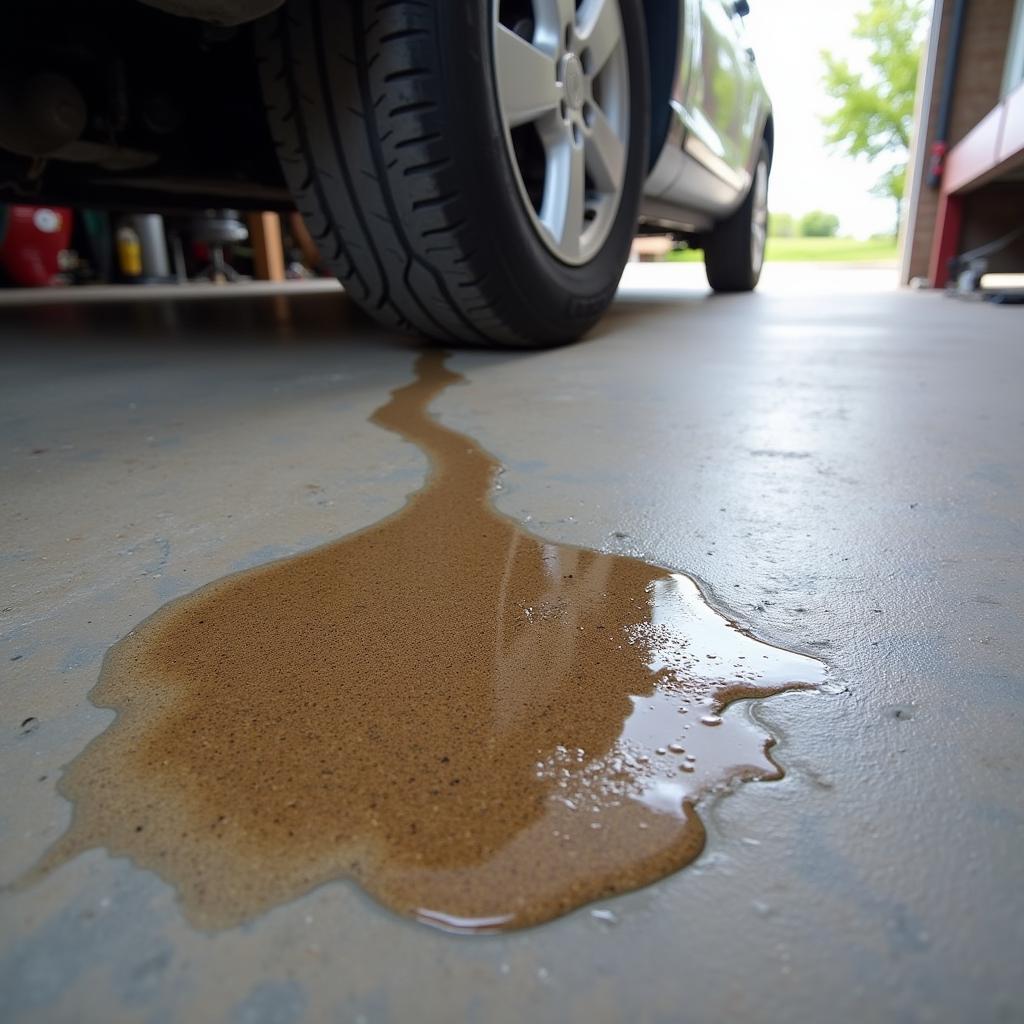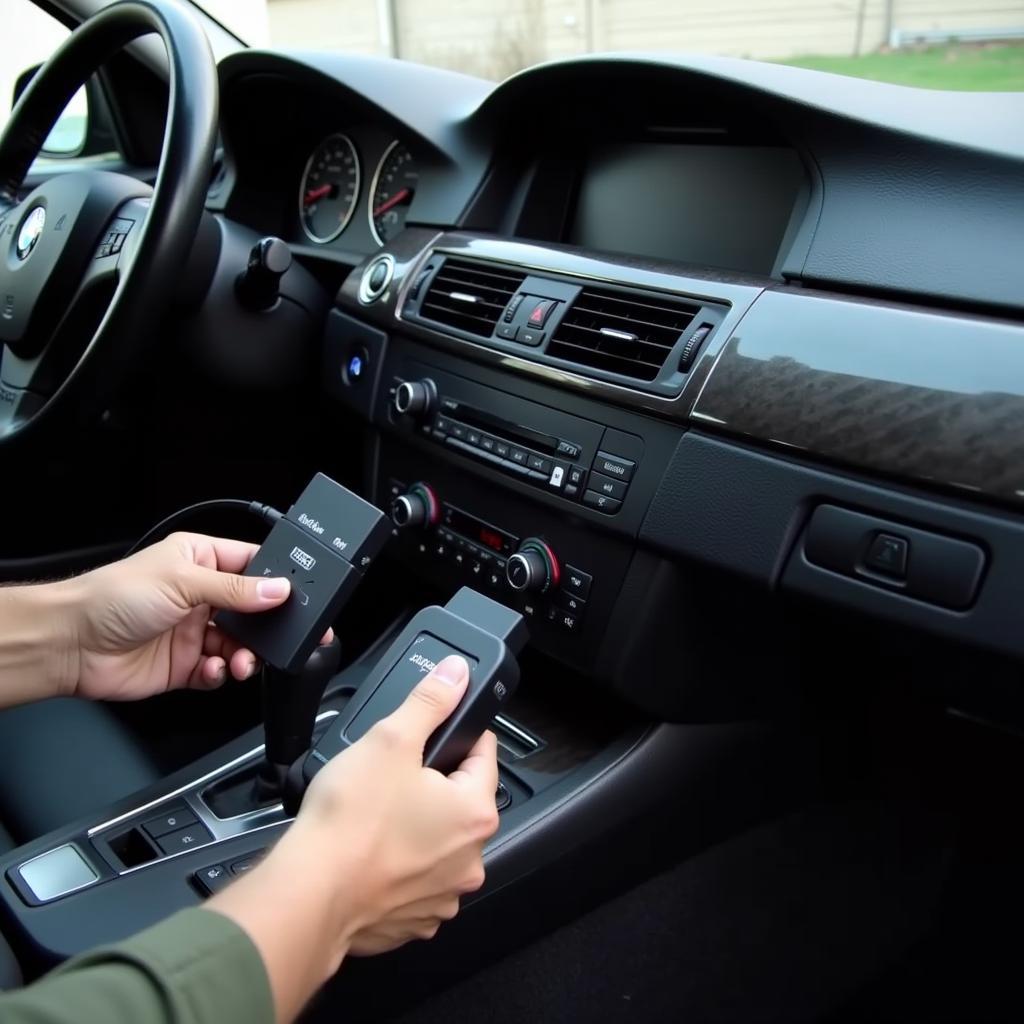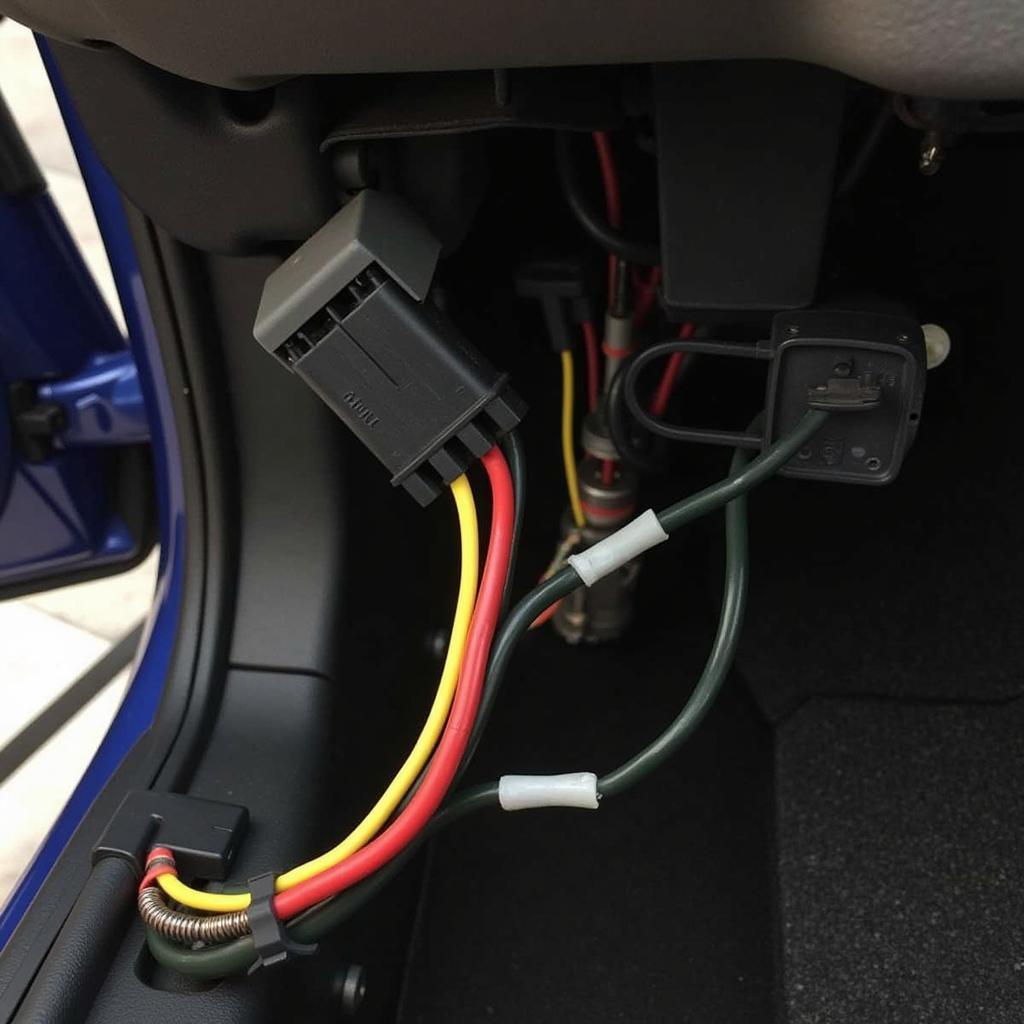A glowing brake fluid warning light on your BMW 535i dashboard can be a cause for concern. While it doesn’t always signal a critical issue, it’s crucial to address it promptly to ensure your safety and the optimal performance of your vehicle. This comprehensive guide will walk you through the common causes of this warning light and provide step-by-step instructions on how to reset it.
Understanding the Brake Fluid Warning Light
The brake fluid warning light, often depicted as a circle with parentheses around an exclamation mark, serves as a critical safety indicator within your BMW 535i. When illuminated, it typically signals one of two things: low brake fluid levels or a problem with your braking system.
Low brake fluid levels can occur due to a leak in the system or worn brake pads. If you’ve recently had your brake pads replaced, the warning light could be due to air trapped in the brake lines, which can happen during the replacement process.
A problem with the braking system is a more serious issue that requires immediate attention from a qualified mechanic. This could be due to a faulty brake line, a malfunctioning ABS sensor, or other issues within the braking system.
Ignoring this warning light can compromise your braking ability and lead to dangerous situations.
Common Causes of the Brake Fluid Warning Light
Before you attempt to reset the brake fluid warning light, it’s essential to identify the underlying cause. Here are some common reasons why this light may illuminate on your BMW 535i:
- Low Brake Fluid: This is the most common cause. Brake fluid naturally depletes over time, and a leak in the system can accelerate this process.
- Worn Brake Pads: As your brake pads wear down, the caliper pistons need to extend further to engage the rotors. This requires more brake fluid, potentially triggering the warning light.
- Brake Fluid Leak: Inspect your garage floor or driveway for any signs of fluid leaks. A leak in the brake lines, calipers, or master cylinder can lead to a rapid loss of brake fluid.
- Faulty Brake Sensor: While less common, a malfunctioning brake fluid level sensor can also trigger the warning light, even if your brake fluid levels are adequate.
How to Check Your Brake Fluid Level
Before attempting a reset, it’s crucial to check your brake fluid level:
- Locate the brake fluid reservoir: Open the hood and locate the reservoir, usually a translucent plastic container labeled “brake fluid.”
- Check the fluid level: Most reservoirs have “Min” and “Max” markings. Ensure the fluid level is between these lines.
- Top off if necessary: If the level is low, use the correct type of brake fluid recommended in your owner’s manual. Be careful not to overfill.
Important: If you need to add brake fluid frequently, it’s crucial to have your braking system inspected for leaks by a qualified mechanic.
 Brake Fluid Leak on Driveway
Brake Fluid Leak on Driveway
Resetting the Brake Fluid Warning Light on a BMW 535i
If you’ve confirmed that your brake fluid level is sufficient and ruled out any leaks or major system issues, you can attempt to reset the warning light.
Important: The following steps are for informational purposes only. If you are unsure about any aspect of this process or suspect a problem with your braking system, consult a qualified BMW technician immediately.
Method 1: Using a Diagnostic Scanner:
- Connect the scanner: Connect an OBD-II scanner to the diagnostic port under the dashboard on the driver’s side.
- Turn on the ignition: Turn the key to the “on” position without starting the engine.
- Access the brake module: Use the scanner to access the brake control module.
- Select “Reset” or “Clear Codes”: Navigate to the option that allows you to reset or clear the brake fluid warning light. Follow the on-screen prompts.
Method 2: Manual Reset:
- Turn off the engine: Ensure the engine is off and the parking brake is engaged.
- Locate the brake fluid level sensor: This sensor is typically located on the brake fluid reservoir.
- Disconnect the sensor: Carefully disconnect the electrical connector from the sensor.
- Turn on the ignition: Turn the ignition to the “on” position without starting the engine.
- Wait for the warning light to turn off: The warning light should turn off after a few seconds.
- Reconnect the sensor: Reconnect the electrical connector to the sensor.
- Start the engine: Start the engine and check if the warning light remains off.
 Resetting Brake Fluid Warning Light with OBD2 Scanner
Resetting Brake Fluid Warning Light with OBD2 Scanner
Expert Insight:
“Always prioritize safety when dealing with brake-related issues. While resetting the warning light yourself might seem tempting, it’s crucial to remember that a professional diagnosis can pinpoint the root cause and ensure your car’s braking system is functioning optimally.” – Mark Stevenson, ASE Certified Master Technician
When to Consult a Professional
If the brake fluid warning light persists after trying these reset methods, or if you notice any of the following, it’s crucial to seek professional assistance immediately:
- The brake pedal feels spongy or goes all the way to the floor.
- You hear unusual noises (grinding, squealing) when applying the brakes.
- The car pulls to one side when braking.
- You experience reduced braking performance.
Attempting to diagnose or repair brake system problems yourself can be dangerous. A qualified mechanic has the expertise, tools, and knowledge to identify and rectify the issue safely and effectively.
Conclusion
Addressing the brake fluid warning light in your BMW 535i is not something to be taken lightly. While a simple reset might do the trick in some cases, remember that it’s essential to investigate the root cause and ensure your braking system is in optimal working order. Regular maintenance and timely inspections can prevent many brake-related problems and ensure safe driving. If you’re ever in doubt, don’t hesitate to consult a qualified mechanic.

